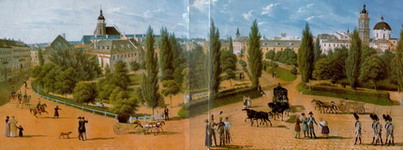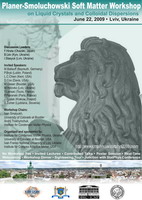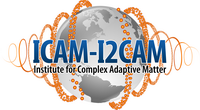PSSM Workshop on Liquid Crystals and Colloidal Dispersions
A model approach to molecular-statistical description of liquid crystal phases with helical twisting and supramolecular heterostructuring
Longin Lisetski, Institute for Scintillation Materials, STC "Institute for Single Crystals" of NAS of Ukraine
Abstract: Rapid development of both analytical and computer simulation techniques has allowed nearly comprehensive molecular-statistical description of practically all known types of liquid crystalline phases. However, many apparently minor but essential points remain obscure. In fact, certain peculiar features (especially in the field of cholesterics and liquid crystal mixtures with strong specific intermolecular interactions), which have been reliably established experimentally and are intuitively consistent with the generally accepted theoretical picture, can not, despite numerous attempts, be directly derived from standard molecular-statistical theories. The major difficulty is that standard mean-field descriptions are too ?rough and do not account for contributions from short-range factors that can be substantial in many cases, while conventional approaches going beyond the mean field require too complicated calculations that seem unassailable both for analytical methods and the most modern computer facilities.
A possible way out is the use of model approaches involving consideration of several levels of nano/micro scales, with factors irrelevant for a specific problem implicitly taken as already averaged at a previous level, and factors assumed as relevant singled out and accounted for explicitly. E.g., a model molecular (pseudo)potential in a form conventionally used for mean-field descriptions (as function of spatial and angular coordinates of an anisometric particle) can additionally include terms originating from short-range interactions; these terms may seem formally phenomenological and somewhat arbitrary, but in fact they can be directly related to certain features of the real chemical structure of the molecules involved.
In this report, a review is presented of results obtained using the above-described approach. Among the most convincing examples (which have not been paralleled by other known theoretical descriptions of liquid crystal properties), one can note the following:
- straightforward explanation of substantially different helical twisting values and even different helical twisting sense of, e.g. cholesteryl chloride and cholesteryl alkanoates (which have very close values of optical rotation);
- numerous cases of extra helical twisting induced in cholesteric matrices by introduction of non-chiral and non-mesogenic dopants, even in the absence of apparent specific interactions;
- anomalous increase in the nematic phase thermal stability for certain mixtures containing components of different chemical nature, etc.
It is claimed that the proposed approach can be promising for description of recently discovered and developed liquid crystalline systems characterized as ?nanostructured or ?heterostructured (including liquid crystalline dispersions of carbon nanotubes, nanorods and other shaped particles of organic and inorganic functional materials, etc.).















